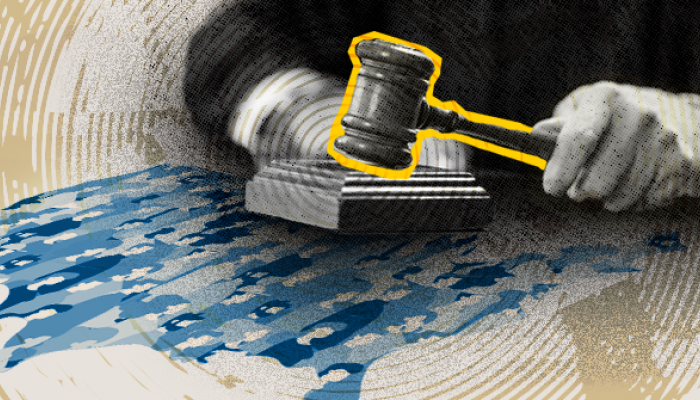We spent a year studying the gender and racial makeup of state supreme courts, which are typically the final arbiters on state law. Our new report, State Supreme Court Diversity, paints a bleak picture of the demographic makeup of these powerful courts. It also points to judicial elections as a key inflection point for addressing the racial disparities we found.
Currently, white men are dramatically overrepresented on state supreme court benches. Though white men make up less than a third of the population, they hold a majority of seats on state supreme courts. Meanwhile, though people of color make up nearly 40 percent of the U.S. population, they hold only 15 percent of state supreme court seats.
Twenty-four states currently have an all-white supreme court bench. This includes eight states in which people of color are at least a quarter of the state’s general population. And in states that have at least one justice of color, there are substantial gaps between the diversity in a state’s general population and its high court bench: the percentage of people of color on the bench is higher than their representation in the state’s population in only five states.
Eighteen states have never had a Black justice on their state supreme court. And 13 states have not seated a single justice of color since at least 1960, the earliest year for which we had comprehensive data.
We also examined how justices initially reached the bench — whether through elections or appointments — and found striking racial disparities.
Elections have rarely been a path to the bench for people of color. Since 1960, only 17 justices of color have first reached the bench through an election, comprising 4 percent of initially elected justices. Comparatively, 141 justices of color were initially appointed to the bench since 1960, comprising 12 percent of all initially appointed justices.
Although candidates of color were more likely to have prior judicial experience as challengers to incumbents or as candidates for open seats, they won less often than their white counterparts.
On average, candidates of color also raised less money than their white counterparts. And once on the bench, justices of color who must run for reelection also face different electoral dynamics than white incumbent justices. Justices of color are challenged for reelection more often than their white counterparts.
Incumbent justices who are people of color also win less often than white incumbent justices, with a win rate of 82 percent, compared to 90 percent.
A diverse bench is crucial in achieving a fair system of justice and judicial legitimacy in the eyes of the communities our judiciary is intended to serve. But across the country, state supreme courts fail to reflect our increasingly diverse nation. We hope this report will prompt action and reform to build an inclusive judiciary.

